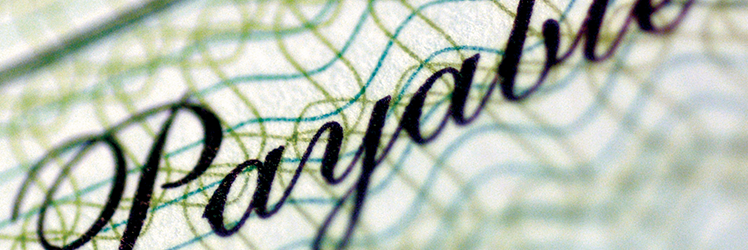Articles
Controls for a Paper-Based Accounts Payables System
- By Mwesige Emmanuel
- Published: 4/30/2018
 (Ed. Note: Updated 4/30/18)
(Ed. Note: Updated 4/30/18)
Accounts payable (AP) controls are used to mitigate the risk of losses in the payables function. These controls can be for an entirely paper-based AP system or a computerized AP system.
Though it may seem unlikely that some companies still use entirely paper-based systems to conduct their AP processes, this is still the case for some smaller businesses, especially in developing countries. Even with a paper-based system, controls are needed to ensure that it operates properly.
Controls for an entirely paper-based AP system
Manually review for duplicate invoices. A non-computerized accounting system has no way to automatically verify a supplier’s invoice number against previous invoice numbers. Consequently, the payables staff must compare each newly received supplier invoice against invoices in two files: both those in the unpaid invoices file and those in the paid invoices file.
Conduct the three-way match. The payables staff must compare the pricing and quantities listed on the supplier invoice to the quantities actually received, as per receiving documents, and the price originally agreed to, as noted in the company’s purchase order. In summary, compare the invoice, Goods Received Note and Purchase Order to ensure accuracy.
Store payables by due date. The company must pay its bills on time, which calls for proper filing of unpaid supplier invoices by payment due date. Otherwise, suppliers can give the company a lower credit score or charge late fees. This control assumes that unpaid invoices will be stored based on the dates when the company can take early payment discounts.
Unused check stock should always be kept in a locked storage cabinet . In addition, the range of check numbers used should be stored in a separate location and cross-checked against the check numbers on the stored checks, to verify that no checks have been removed from the locked location.
The check signer must compare the voucher package to the check. The check signer must compare the backup information attached to each check to the check itself, verifying the payee name, amount to be paid, and the due date. This review is intended to spot unauthorized purchases, payments to the wrong parties, or payments being made either too early or too late. This is a major control point for companies not using purchase orders, since the check signer represents the only supervisory-level review of purchases.
Perforate the voucher package (stamp the payment vouchers). The voucher package can be reused as the basis for an additional payment unless the package is perforated with the word “paid” or some other word that clearly indicates the status of the voucher package.
Pre-number receiving reports. A key part of the three-way matching process is to ensure that the items being paid for have actually been received, and in the correct quantities. It is easier to ensure that all receiving reports are being transferred to the AP department by pre-numbering the receiving reports and tracking down any reports whose numbers are missing.
Lock up blank receiving reports. If three-way matching is used, then the receiving report is considered evidence that the quantity of an item contracted for has arrived at a company location. If someone were to steal a blank receiving report, he or she could take the goods and still submit a completed receiving report, resulting in undetected theft. Consequently, it may be useful to lock up unused receiving reports.
Pre-number purchase orders. The purchase order is a key part of many AP systems, since it provides the central authorization to pay. Consequently, if the purchasing system is paper-based, it makes sense to keep track of the stock of purchase orders by pre-numbering them.
Lock up blank purchase orders. The purchase order represents a company’s official authorization to acquire goods and services. If someone could obtain blank purchase orders and fraudulently affix a company officer’s signature to it, that person could obligate the company to a variety of purchases with relative impunity. Consequently, in cases where purchase orders are printed in advance, they should be stored in a locked cabinet.
Mwesige Emmanuel is a treasury executive based in Uganda.Sign up for our monthly Inside Treasury Newsletter to stay up-to-date on the latest industry news and insights.
Copyright © 2024 Association for Financial Professionals, Inc.
All rights reserved.

